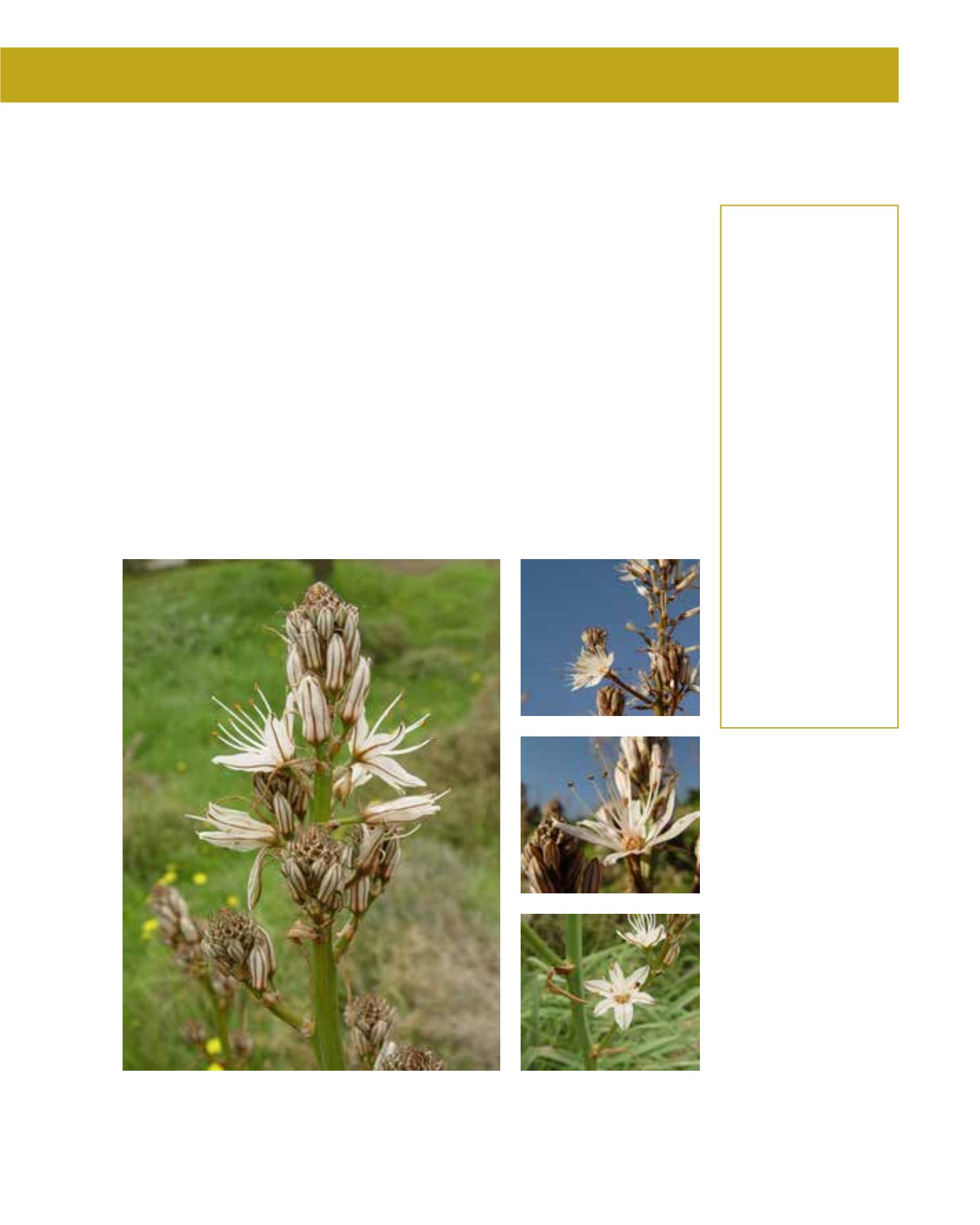

GENERAL
Origin
:
sub-Mediterranean,
Mediterranean,
sub-tropical
Humidity
:
very arid, semi-
arid
Propagation :
sowing and
pricking out
Maintenance :
low
CONDITIONS
Urban climate :
resistant
Dessication :
resistant
Stagnant water :
vulnerable
Irrigation
:
low, none
Salinity/ppm :
moderate (3000
ppm)
Hardiness
:
-12°C
SHAPE
Type
:
biennial, annual
Height
:
0.15 m-0.3 m
Spread
:
0.1 m-0.3 m
Foliage
:
evergreen
FLOWER
Colour
:
white
Size
:
1.2 cm
Period
:
February -
February
FRUIT
Type of fruit :
capsule
Fruit size
:
0.4 cm
The Onion-leaved Asphodel, or burwaq in Arabic, is an annual or biennial herb, native to
the Arabian Peninsula, northern Africa and the Mediterranean. The numerous, narrow leaves
appear close to the ground, reaching a height of some 15 cm; the flower spike, looking like a
candelabrum, grows up to 30 cm. The tiny, single white flowers are star-shaped with a thin, red
line in the middle of each petal. They appear in spring. The fruits are egg-shaped capsules and
the root system is fibrous. The Asphodel prefers sandy or loamy soil, and grows in wadis, rocky
or sandy deserts. Propagation is very successful by seed, and the plant is also self-seeding. It also
has uses as medical plant. The crushed leaves can be applied to ulcers or boiled in water and
drunk as a diuretic or laxative. A. fistulosus is an indigenous desert plant in the Arriyadh region
with usefulness for landscape design, and is a good plant for natural planting schemes in rock or
steppe gardens as well as for the renaturalisation of hillsides or as a coloniser.
60
Asphodelus tenuifolius,
Asphodelaceae
Asphodel,
bayrq, busayl, burwaq
















